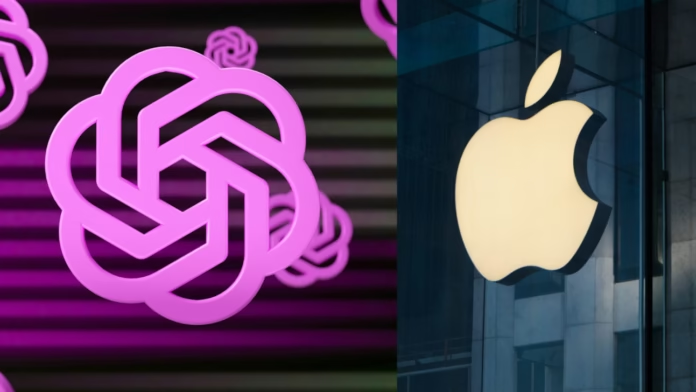If you’ve been watching the tech world lately, you might have noticed a subtle yet seismic shift: OpenAI isn’t just dominating AI software; they’re quietly raiding Apple’s talent pool. According to a recent report by The Information, the AI giant has been scooping up Apple employees at a pace that’s raising eyebrows. And the reason isn’t just the lure of a flashy title or a fatter paychec,k it’s about freedom, creativity, and the chance to build hardware differently.
A Surge in Apple Departures
Over the past year, OpenAI has brought on more than two dozen former Apple staff. To put that in perspective, only about 10 made the jump in 2024. The influx isn’t random. OpenAI is targeting specialists from Apple’s wearables, cameras, audio, and interface design teams.
Some names stand out. Cyrus Daniel Irani, known for designing Siri’s iconic waveform, is now with OpenAI. So is Erik de Jong, who previously held a senior role on the Apple Watch team. These hires aren’t just designers; they’re architects of Apple’s most recognizable consumer experiences.
Tang Tan, OpenAI’s chief hardware officer and a 25-year Apple veteran, is leading the charge. If the name sounds familiar, it should. Tan spent decades translating the bold visions of iPhone designer Jony Ive into products millions of people hold in their hands. Now, Tan says OpenAI offers something Apple can’t: faster decision-making, less bureaucracy, and a genuinely collaborative environment.
It’s fascinating to imagine one minute you’re navigating Apple’s famously meticulous product cycles, and the next, you’re in a place where ideas move at near-light speed. That contrast seems to be the real draw for Apple talent.
Why OpenAI’s Hardware Ambitions Are Serious
This isn’t just talent poaching for the sake of bragging rights. OpenAI is making strategic moves into the hardware world, signaling that the company wants to compete in spaces Apple has long dominated. Earlier this year, OpenAI acquired io Products, a startup co-founded by Jony Ive and Tang Ta, for a staggering $6.5 billion. While I’ve still run his LoveFrom studio, he’s spending more time at OpenAI’s offices, lending credibility to the company’s hardware vision.
And OpenAI’s ambitions don’t stop at acquisitions. The company is entering Apple’s supply chain. Luxshare has agreed to manufacture at least one OpenAI device, and Goertek has been approached for components. Rumor has it that OpenAI is exploring a range of devices: a smart speaker, AR glasses, a voice recorder, and even a wearable pin. Early projections suggest these could hit the market in 2026 or 2027.
Incentives That Apple Can’t Match
It’s not just the work environment that’s enticing former Apple employees. OpenAI reportedly offers stock packages worth over $1 million, along with promises of quicker decision-making and fewer bureaucratic hurdles. For employees frustrated by Apple’s incremental updates and modest stock gains, this is a compelling opportunity.
Think of it like a creative tug-of-war: Apple represents stability, refinement, and a legacy of design excellence. OpenAI represents agility, risk-taking, and a chance to shape products from the ground up. For talent hungry for innovation, the choice is clear.
What This Means for the Tech Landscape
OpenAI’s strategy could have long-term implications. For Apple, losing veterans from wearables, interface design, and hardware innovation might slow certain product pipelines or reduce design experimentation. For OpenAI, acquiring top-tier Apple talent accelerates its hardware ambitions, giving it insider knowledge on supply chains, design thinking, and mass production.
From a broader perspective, it underscores how AI is reshaping the tech talent market. Companies aren’t just competing on products anymore; they’re competing for brains, experience, and the ability to execute vision fast.
Why You Should Care
You might be wondering: “I’m not a hardware designer or Apple employee—why should I care?” Here’s the takeaway: the products we use daily could soon reflect this talent migration. OpenAI’s entry into consumer hardware may result in smarter, more integrated devices that leverage AI in ways Apple hasn’t fully explored yet.
For investors, this could hint at a new wave of competition in the smart device market. For tech enthusiasts, it means more innovation, faster iteration, and perhaps a few surprises in the devices we interact with daily.
Final Thoughts
OpenAI’s poaching of Apple talent isn’t a minor footnote in tech news—it’s a signal. The company is positioning itself as not just an AI software leader, but as a serious contender in consumer hardware. By attracting top designers and engineers who have built some of Apple’s most iconic products, OpenAI is laying the foundation for devices that could change how we think about AI in everyday life.
What really stands out is the blend of ambition and strategy. OpenAI isn’t just hiring; it’s building an ecosystem where innovation moves fast and creativity thrives. And if their early moves are any indication, we might be on the cusp of seeing products that feel as intuitive as an iPhone, but powered by AI in ways we’ve only imagined.
If you’ve ever wondered how AI will shape your daily tech, this is one of the clearest signs yet.

